 |
 |
 |
 |
 |
 |
 |
 |
 |
 |
Seismometers |
 |
 |
 |
 Working principle Working principle |
 |
|
 |
A seismometer is a sensor that measures ground motion.
As ground motion causes its frame to move, a fixed reference point is required for taking measurements. This is the purpose of the mechanical oscillator, which can be a mass-spring system (mobile mass attached to the frame by a spring) or a horizontal pendulum (mobile mass offset from the vertical axis of rotation).
One property of mechanical oscillators is that the mobile mass remains immobile regardless of the motion applied to the frame (inertial reference frame) for a motion frequency higher than its resonance frequency. Below this resonance frequency, mass displacement is proportional to the acceleration applied to the frame.
A vertical seismometer, which is used to measure vertical ground motion, uses an oscillator based on the mass-spring system to compensate for gravity. A horizontal seismometer, which is used to measure horizontal ground motion, is based on the horizontal pendulum principle.
Seismometers must have very low intrinsig noise to be able to measure movements of the order of 10-10 m (1Å).
These movements can be caused by natural microseismic noise resulting above all from the effects of swell on the seabed, from industrial noises (plants, cars, sawmills, etc.), and from seismic waves from earthquakes, quarry blasts, or nuclear explosions. These waves propagate through the Earth along several paths and in several phases recorded at different moments on seismograms. |
 |
|
 |
 ZM-500 and HM-500 short-period seismometers ZM-500 and HM-500 short-period seismometers |
 |
|
 |
Short-period (< 2s) seismometers are particularly used to study body waves (compression waves (or P-waves), S-waves (or shear waves)) and local and regional seismicity. Nuclear explosions mostly generate P-waves.
ZM-500 (vertical) seismometer and HM-500 (horizontal) seismometer use a simple measuring system based on a coil attached to the mobile mass and inserted into a magnet fixed to its frame. This system can measure ground velocity for frequencies higher than pendulum's natural frequency (see sensitivity response figure hereafter). Seismometer is calibrated by injecting a current at a given frequency into a secondary coil, wrapped around the measurement one. This current induces a force proportional to itself. The advantage of this method is that the entire measuring line can be calibrated simultaneously. A nominal sensitivity of 2250 V.m-1.s-1, a natural period of 1 or 2 seconds and a mobile mass of 700 grams provide a resolution of about 1 angström/second in the 0.1-100 Hertz band. These are hand-held devices (weighing 11 kg) that can also easily be mounted on a pier secured to their base and sheltered from the wind.
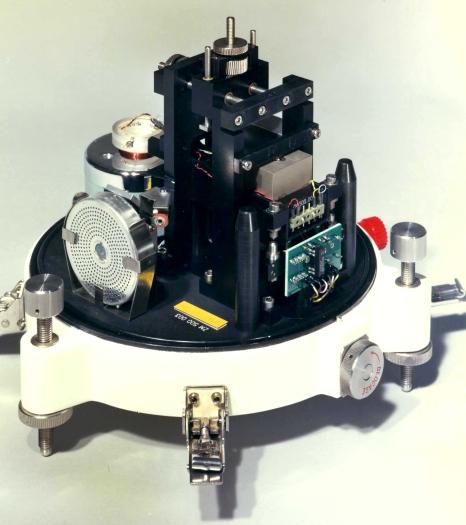
 |
DASE ZM-500 short-period vertical seismometer. |
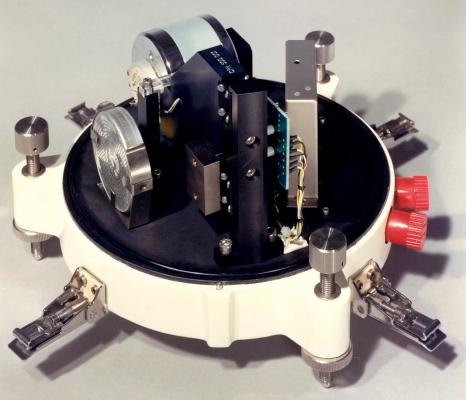
 |
DASE HM-500 short-period horizontal seismometer. |
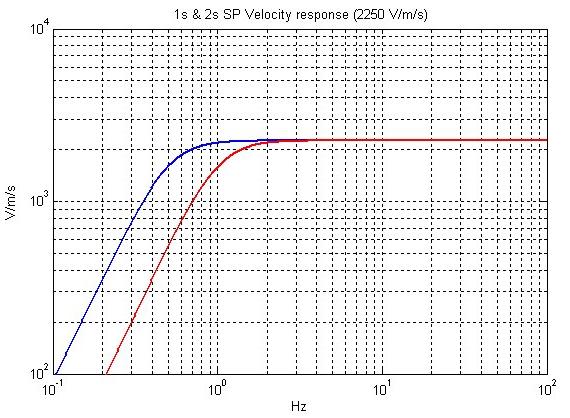
 |
Sensitivity as a function of frequency for ZM-500 and HM-500 seismometers with 1 and 2 second natural periods (red and blue curves respectively). |
|
 |
|
 |
 LPZA-12s and LPHA-12s long-period seismometers LPZA-12s and LPHA-12s long-period seismometers |
 |
|
 |
In order to study seismic surface and body waves, DASE uses long-period seismometers that measure ground motion from 1 to several hundred seconds, up to continuous waves. These seismometers are also used to study Earth natural periods (53 minutes), and the Earth tides (12 hours).
DASE seismometers are force balanced. Mobile mass motion is measured by an LVDT displacement sensor. This measurement is proportional to ground acceleration for frequencies lower than pendulum's natural frequency and proportional to ground displacement above. Long period measurements are therefore acceleration measurements: these sensors are above all accelerometers. In order to obtain adequate long-period resolutions, their mobile mass (2 kg) must be heavier than that from short-period sensors and their natural period about 12s. These high period and mobile mass values make it highly sensitive (> 300 000 V.m-1.s2) which would limit their measurement range to a maximum of 4 µg. To increase motion range and adapt the frequency response, an electromagnetic feedback is used. This system applies to the mobile mass an acceleration opposed to the measured one limiting mass sensitivity to acceleration. Seismometer sensitivity is reduced to an acceptable value (2533 V.m-1.s). Acceleration range becomes 400 µg. Seismometer's natural period is thus adjusted to 1 Hz, which gives an effective frequency band ranging from continuous to 1 Hz (see the acceleration response figure).
But seismic phases are mainly visible on recorded velocity or displacement signals. These values are achieved by integrating the signal delivered by the sensor, using analog low-pass filters. This analog technique achieves high resolutions over a wide frequency range (refer to velocity and displacement response curves).
LPZA-12s (vertical) and LPHA-12s (horizontal) long-period seismometers developed by DASE fulfill these characteristics.
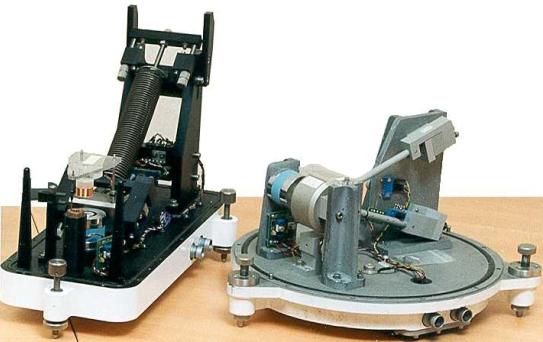
 |
LPZA-12s long-period vertical seismometer (left) and LPHA-12s long period horizontal seismometer (right). |
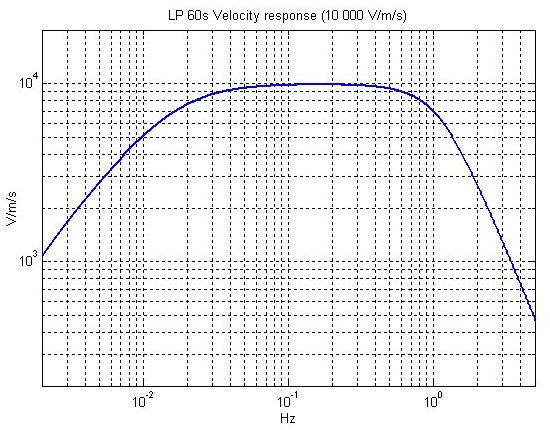
 |
Example of LP velocity response with high sensitivity. |
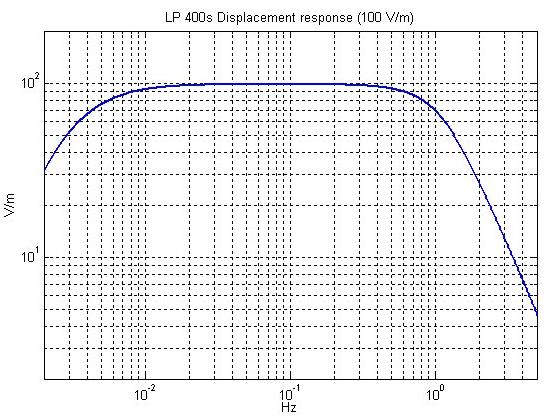
 |
Example of LP displacement response with low sensitivity. |
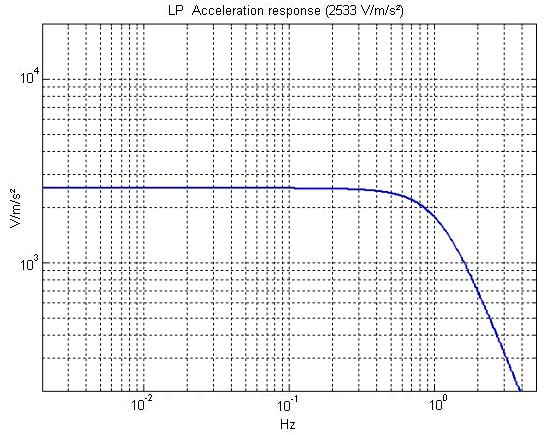
 |
LP acceleration response rating. |
LPHA-12s can also be used as an inclinometer whose noise is equivalent to 10-9 radian. It is then used as an accelerometer to measure horizontal gravity gradient when the sensor is tilted. |
|
|